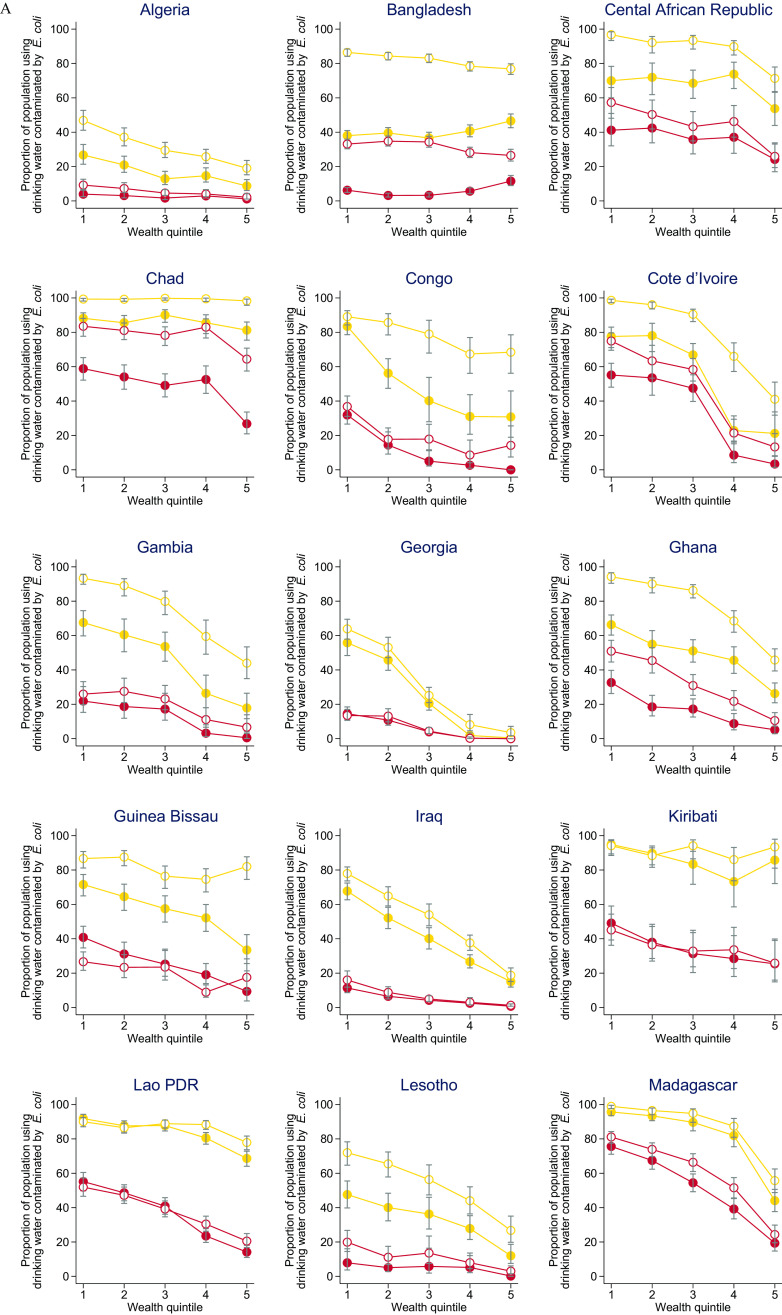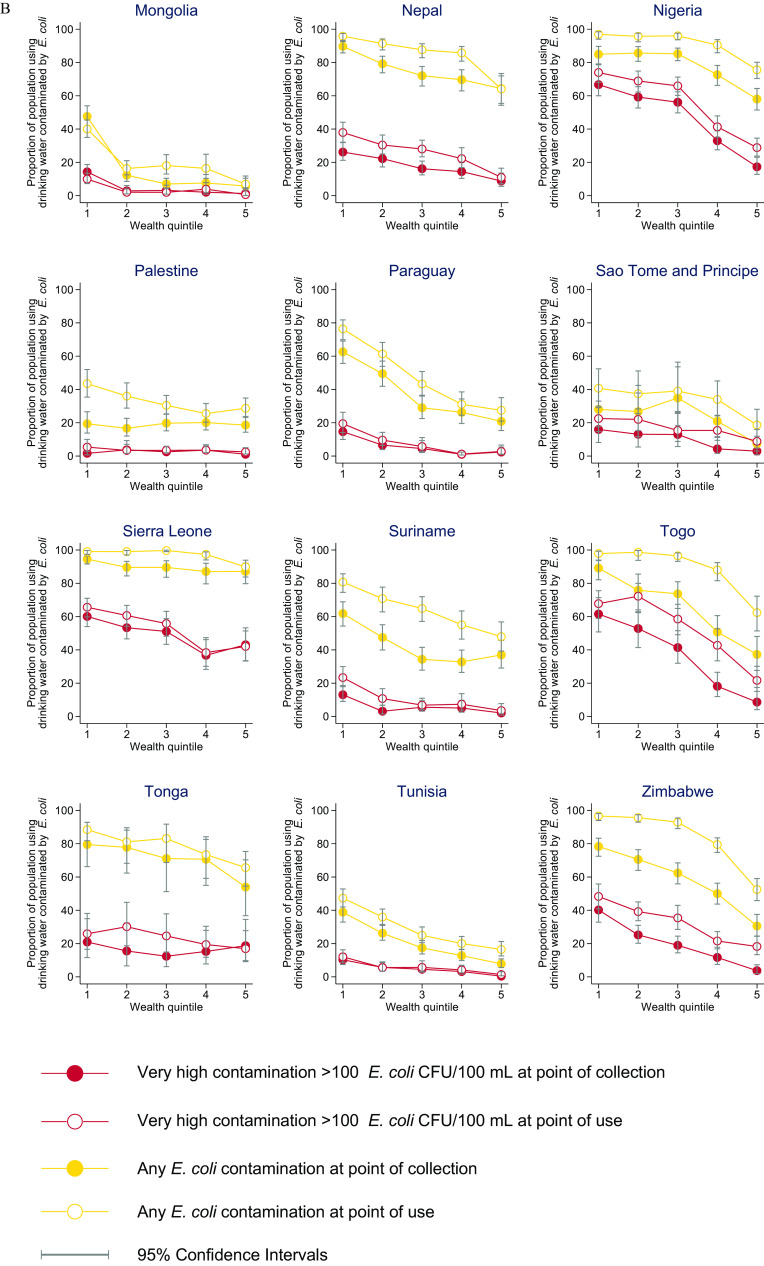Figure 5.
E. coli contamination of drinking water at point of collection and point of use by wealth quintile in 27 low- and middle-income countries, 2014–2020: (A) Algeria to Madagascar, and (B) Mongolia to Zimbabwe. Wealth quintiles from 1 (poorest) through 5 (richest). Wealth quintiles reflect a relative measure of inequality within each country based on asset ownership. Corresponding numeric data are provided in Excel Table S3. Note: CFU, colony forming unit; E. coli, Escherichia coli; Lao PDR, Lao People’s Democratic Republic.


